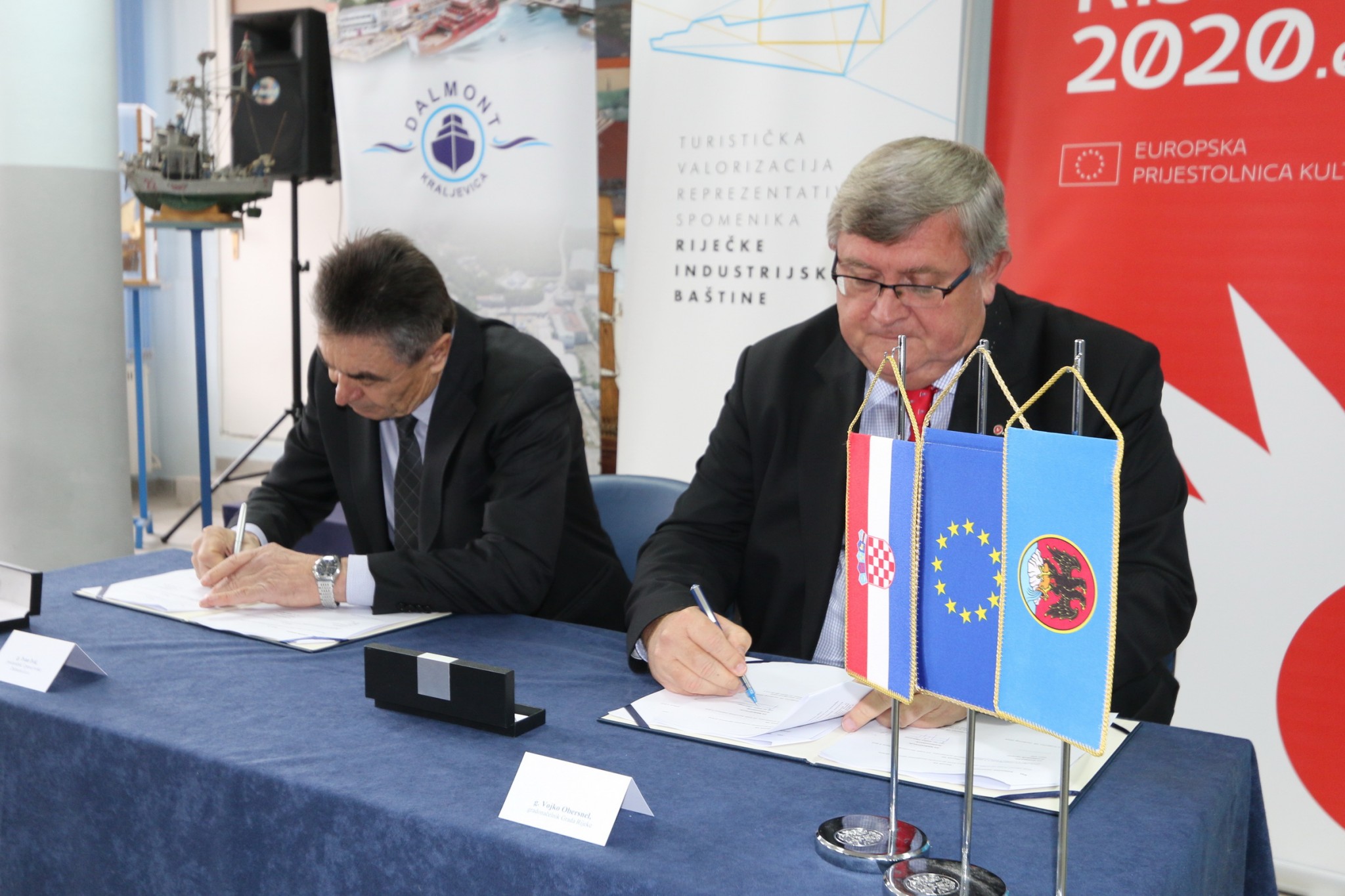The City of Rijeka and the Dalmont company signed an agreement that put the wheels in motion for repurposing the ship Galeb, a protected cultural property of the Republic of Croatia, as a museum ship.
An agreement to begin the renovation of the ship Galeb, a protected cultural property of the Republic of Croatia, was signed today at the shipyard in Kraljevica. The agreement was signed by the Mayor of Rijeka Vojko Obersnel and Ivan Ivić, CEO of Dalmont d.o.o., a company that won a tender for the renovation and repurposement of the Galeb.
The Galeb will be turned into a museum as part of the European Capital of Culture project and will be located in the Port of Rijeka, next to Molo Longo, following renovation. Upon reconstruction and fitting, the Galeb will primarily serve a cultural purpose. In addition to the permanent museum exhibition, there will also be exhibition areas, a cinema and various creative workshops aboard the ship. A small portion of the ship will be used for commercial purposes by providing accommodation, a restaurant and a gift shop.
“There is no doubt in my mind that the Galeb will become one of the biggest tourist attractions in Rijeka, seeing as how it is hugely popular even now, before renovation, and is frequently visited by Croatian and foreign reporters,”
said the Mayor of Rijeka Vojko Obersnel while signing the agreement and thanking everyone involved in the project, as well as the CEO of Dalmont, the company that submitted and won the tender for the ship renovation works.

The museum ship’s interactive multimedia permanent exhibition will feature four basic thematic units: the history of the ship RAMB III/Kiebitz/Galeb from 1938 to 1990 (with links to the same era of Rijeka’s history), the role of Josip Broz Tito and his trips aboard the Galeb in the development of the Non-Aligned Movement, everyday life on board of the military school ship and the presentation of the ship as a technological achievement (the engine room, the wheelhouse). The museum holdings will consist of all the existing ship equipment, illustrative material, such as photos and videos, copies of documents regarding the construction and history of the ship and archives of articles, books and other texts pertaining to the Galeb. Visitors will be able to look around the fully restored living quarters, such as Tito and Jovanka’s apartment, the common salon, guest apartments, main salon, dining room, large guest salon, closet and bedrooms.
The works worth 46,858,218.91 without VAT and 58,572,773.64 HRK with VAT are financed, inter alia, by EU funds. The Galeb, along with the Sugar Refinery Palace, will be refurbished through the “Tourism valorisation of representative monuments of the industrial heritage of Rijeka” with 68,9 HRK of grants allocated to Rijeka from the European Regional Development Fund as part of the Operational Programme Competitiveness and Cohesion.
The ship Galeb boasts a long history and, by becoming a museum, it will be repurposed for a third time. It was constructed and launched in 1938 in the Ansaldo shipyard in Genoa, Italy, under its original name “Ramb III” and served as a cargo ship. In the early stage of WWII, it was repurposed into a warship, initially as an auxiliary battlecruiser. Following the capitulation of Italy in 1943, the Germans took command of the ship, renamed it the “Kiebitz” and fitted it with tracks for launching mines. In 1944, the “Kiebitz” laid over 5000 mines in Kvarner and the northern Adriatic before being sunk on 5 November 1944 by Allied bombs in the Port of Rijeka. It was hauled out by the Brodospas company from Split in 1948. After being renovated at the “Uljanik” shipyard in Pula, it was commissioned by the navy as the Galeb School Ship.
